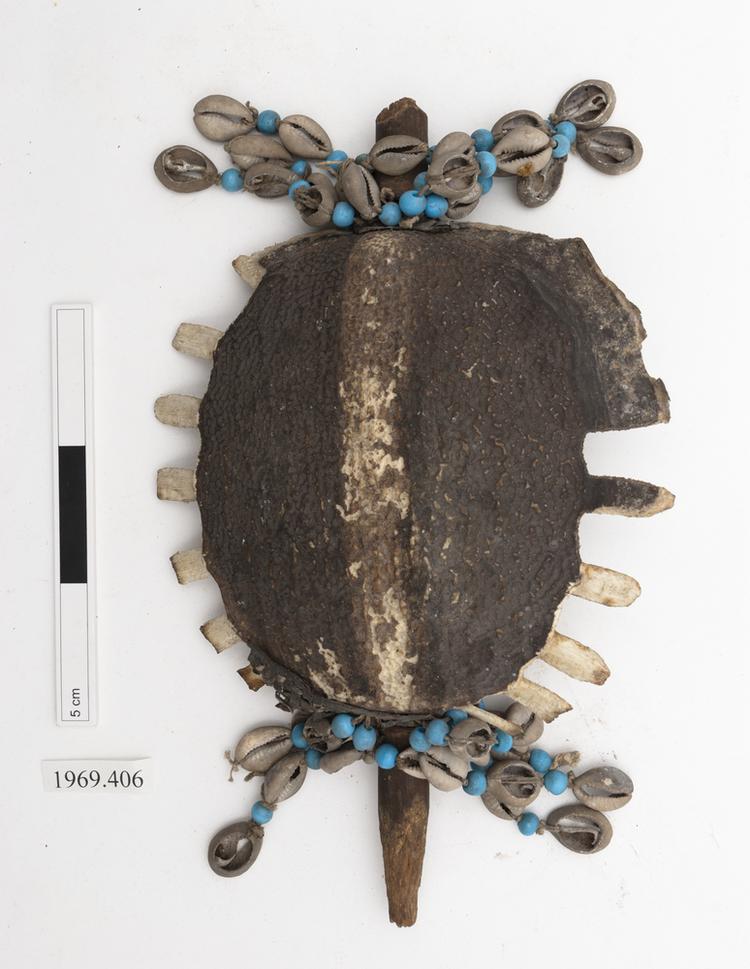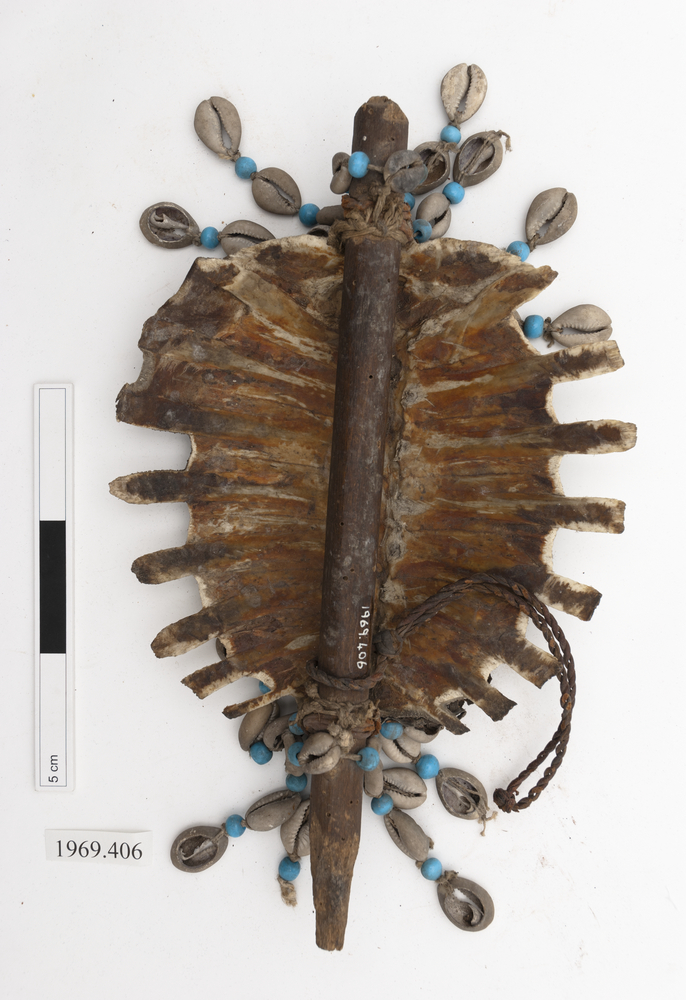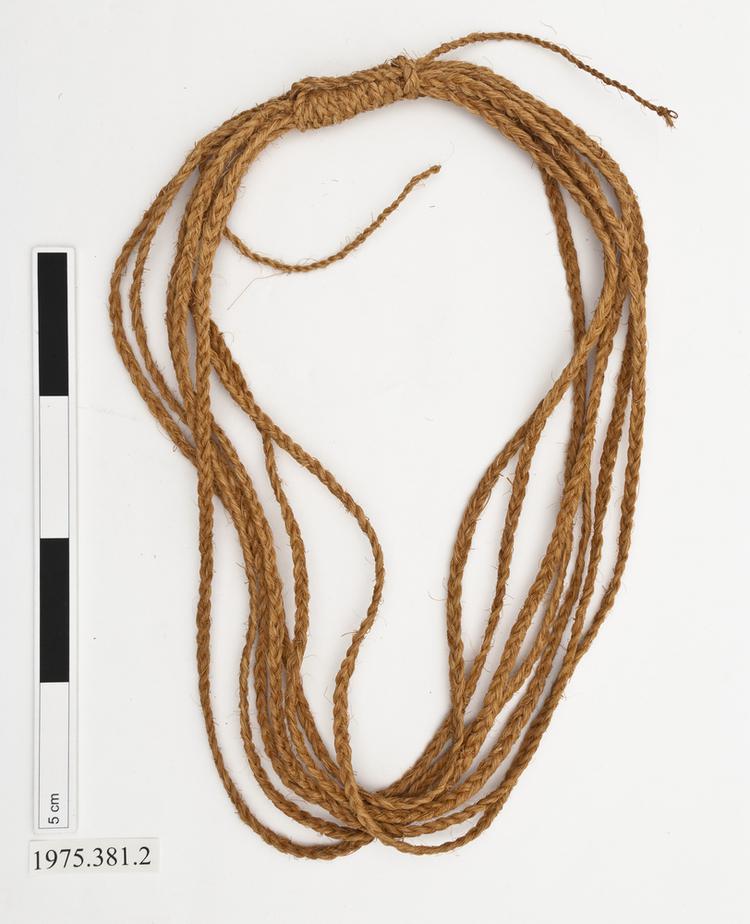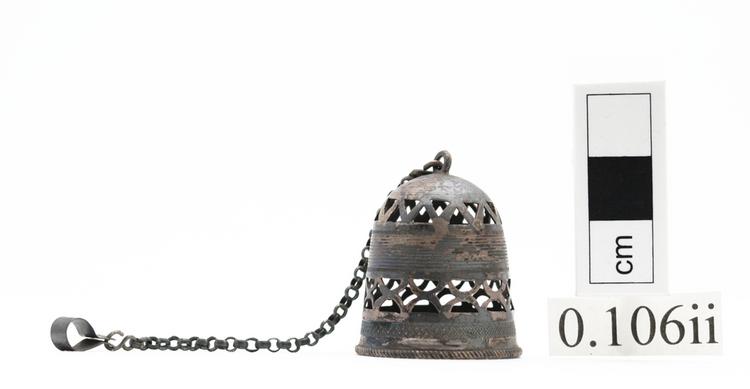

Fist shield or knife from Eastern Africa, possibly Kenya. Made from turtle shell, with a wooden cylindrical handle running down the reverse spine. The handle is tapered at one end to a point. Cowrie shells and blue circular beads are attached by plant fibre string to the top and bottom of the shell for decoration. The main shield body is carved at the edges to create a star like pattern.
Community Commentary by Njeri Gachihi within research project: 'Rethinking Relationships and Building Trust Around African Collections' 2021: The object above in design is closely related to the Turkana traditional fist knife, hence its name. Its provenance doesn’t seem very clear but borrowing from the design and the raw material, it must have belonged to a community that lived near a water body and one that exploited turtles as food or a source of livelihood. The communities that live near Lake Turkana are the Turkana, Rendile and Elmolo. Historically, the Elmolo are known to have exploited turtles as a main source of food in addition to fish and hippopotamus. However, Kenya wildlife has since banned the exploitation of Hippopotamus and turtles due to their reduction in the ecosystem. Given the value attached to tuttles by the Elmolo, and their proximity and interaction with the Turkana, this object may have been made by the Elmolo.
fighting





